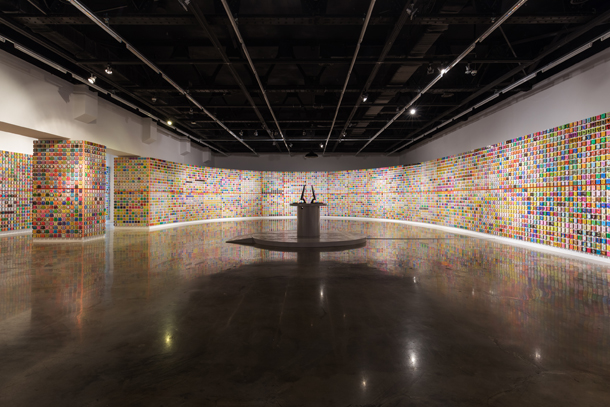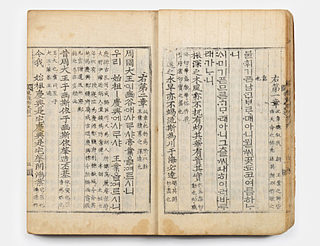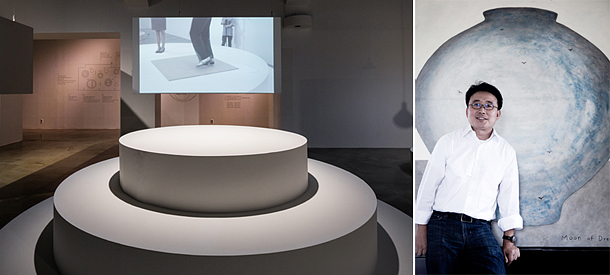Two new exhibits mark Hangul Day : Events offer stunning looks at the form and function of the script

The exhibition of the public art project “Things I Know,” which will be exhibited in the Arko Art Center until Nov. 19. [ARKO ART CENTER]

The original text of “Songs of the Dragons Flying to Heaven,” which is the first work written in hangul. [NATIONAL HANGEUL MUSEUM]
“We need to take more interest in the handwriting styles of each country,” said Riw Ho-sun, the team director for the exhibition, who pointed out that many European countries analyzed their ancient calligraphies and, based on the studies, developed typographies fit for their language systems. On the other hand, such researchers have not been active in Korea, she said.
Among the highlights of the exhibits is a diary of King Yeongchin (1897-1970), the last crown prince of the Joseon dynasty (1392-1910). The diary, written in Japanese in 1919, during the Japanese colonial era, is on exhibit for the first time in Korea.
The highlights of the documents written in hangul include the “Hangul commentary describing the purpose of the creation of Hunminjeongeum [the initial name of hangul].”

Left: The exhibition “Stage for Learning” is held in Gallery 2 on the second floor of the Arko Art Center. Right: The artist Kang Ik-joong poses for a photo. [ARKO ART CENTER]
As a variation of his “Things I Know” (2010) project, Kang asked 2,300 people, including foreigners who are learning the Korean language, to write sentences that are always in their minds, using crayons on three-inch by three-inch square panels - one syllable per panel. The sentences range from aphorisms to the participants’ own words of wisdom. After receiving them, Kang combined them to create the grand-scale public work.
“I have written thousands of sentences about the ‘things I know’ on such panels over the past three decades and have exhibited such works,” the artist told the Korea JoongAng Daily. “Now, it’s time for me to ask other people things they know. So I have made this work. It is so important to learn from each other, to teach each other.”
“I believe learning could also take place through art exhibitions,” said Lee Young-joo, the curator and team director of the project. “I also wanted more active participation from viewers. Instead of just trying to understand the artist’s motives and search for the hidden meanings of art, I wanted the public to actually learn through each pieces of art.”
BY LEE JAE-LIM, MOON SO-YOUNG
[lee.jaelim@joongang.co.kr]
“Things I Know” runs until Nov. 19. Arko Art Center is closed on Monday. Admission is free. For details, visit http://art.arko.or.kr or call (02) 760-4850.
“Calligraphy in China-Japan-Korea” runs until Dec. 31. Admission is free. For details, visit www.hangeul.go.kr or call (02) 2124-6200.










with the Korea JoongAng Daily
To write comments, please log in to one of the accounts.
Standards Board Policy (0/250자)